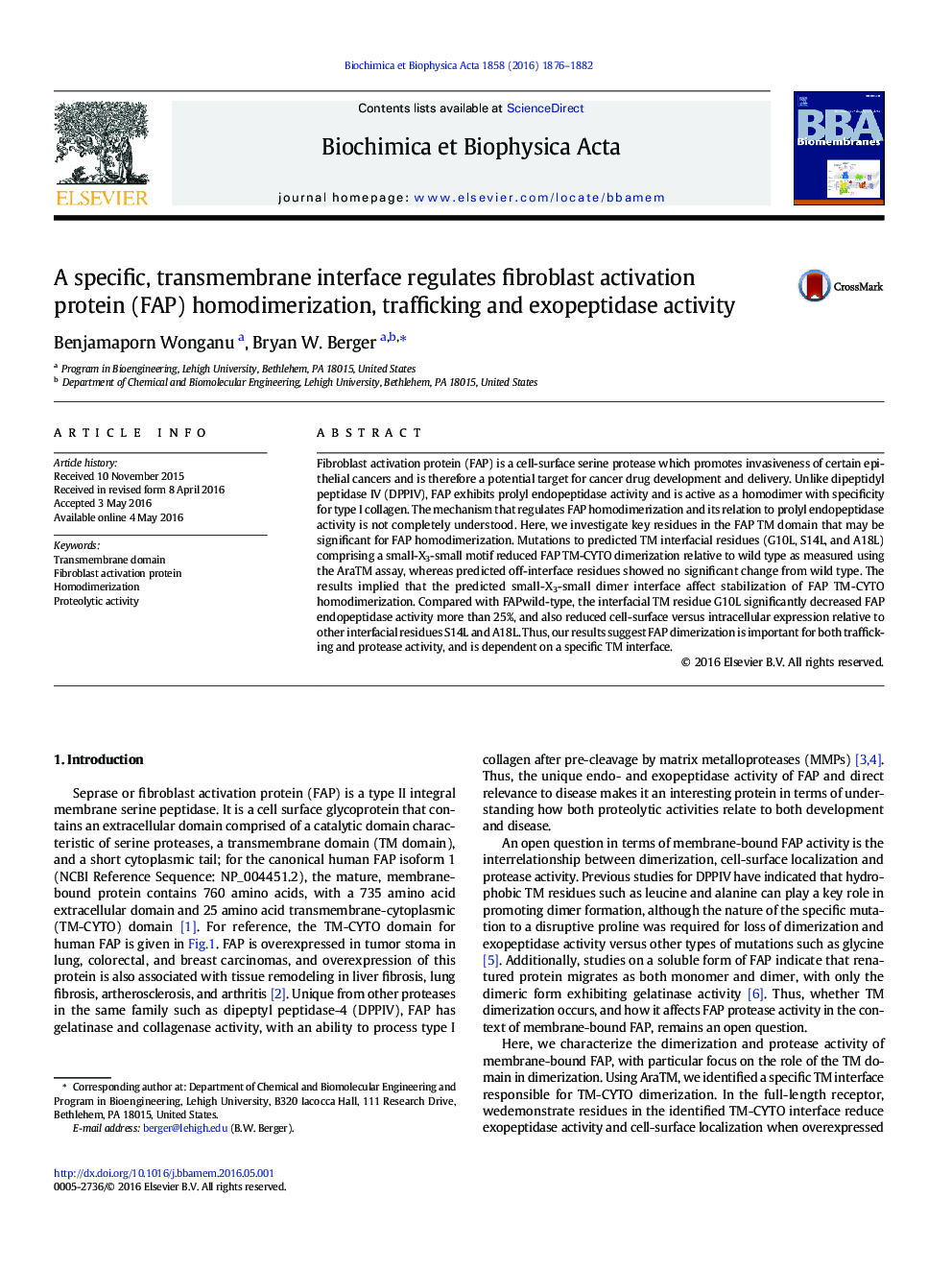| کد مقاله | کد نشریه | سال انتشار | مقاله انگلیسی | نسخه تمام متن |
|---|---|---|---|---|
| 1943910 | 1053164 | 2016 | 7 صفحه PDF | دانلود رایگان |

• A small-x3-small motif regulates FAP transmembrane dimerization.
• Disrupting FAP TM dimerization reduces exopeptidase activity.
• Disrupting FAP TM dimerization cell surface expression
• FAP TM domain is important in regulating exopeptidase activity.
Fibroblast activation protein (FAP) is a cell-surface serine protease which promotes invasiveness of certain epithelial cancers and is therefore a potential target for cancer drug development and delivery. Unlike dipeptidyl peptidase IV (DPPIV), FAP exhibits prolyl endopeptidase activity and is active as a homodimer with specificity for type I collagen. The mechanism that regulates FAP homodimerization and its relation to prolyl endopeptidase activity is not completely understood. Here, we investigate key residues in the FAP TM domain that may be significant for FAP homodimerization. Mutations to predicted TM interfacial residues (G10L, S14L, and A18L) comprising a small-X3-small motif reduced FAP TM-CYTO dimerization relative to wild type as measured using the AraTM assay, whereas predicted off-interface residues showed no significant change from wild type. The results implied that the predicted small-X3-small dimer interface affect stabilization of FAP TM-CYTO homodimerization. Compared with FAPwild-type, the interfacial TM residue G10L significantly decreased FAP endopeptidase activity more than 25%, and also reduced cell-surface versus intracellular expression relative to other interfacial residues S14L and A18L. Thus, our results suggest FAP dimerization is important for both trafficking and protease activity, and is dependent on a specific TM interface.
Figure optionsDownload high-quality image (130 K)Download as PowerPoint slide
Journal: Biochimica et Biophysica Acta (BBA) - Biomembranes - Volume 1858, Issue 8, August 2016, Pages 1876–1882